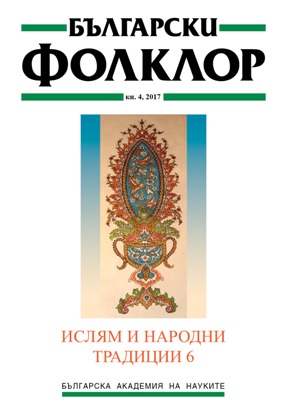Скито-сакски източници на орнамента бута
Scythian-Saka Roots of the Buta Ornament
Author(s): Hasan Azizoglu HasanovSubject(s): History, Anthropology, Archaeology, Fine Arts / Performing Arts, Cultural history, Architecture, Visual Arts, Comparative history, Ancient World, Middle Ages, Cultural Anthropology / Ethnology, Culture and social structure
Published by: Институт за етнология и фолклористика с Етнографски музей при БАН
Keywords: ornament buta/Paisley pattern; Scythians and Sakas’ culture; decorative arts of the Turkic peoples in Caucasus and Central Asia
Summary/Abstract: The author of the article explores origines and later revival of buta – an almond-shaped ornament with a sharp-curved upper end. The ornament is broadly used in decorative arts of many peoples in the East and is esteemed as the most ancient national ornament of Azerbaijan. According to the author, the earliest samples of buta date back to 8th century B.C.E. and come from the cultures of Scythians and Sakas, where the ornament had sacred and symbolical meaning. The revival of the ornament buta began in 12th century, during the reign of the Turkic dynasty Eldegizids on the territory of Azerbaijan and in the course of time it spread on whole of Greater Persia. In 16th century buta was conveyed to India by the Mughals, and hence – to the Great Britain, where buta became known as “Paisley pattern” after the town of Paisley – the textile-manifacturing center in Scotland. The author’s conclusion, based on comparative analyses of a multitude of examles from applied arts and architecture in whose decoration or form buta is used, is that Persian, Indian and Western cultures have borrowed both the ornament and its name from the Turkic peoples.
Journal: Български фолклор
- Issue Year: XLIII/2017
- Issue No: 4
- Page Range: 487-499
- Page Count: 13
- Language: Bulgarian
- Content File-PDF

